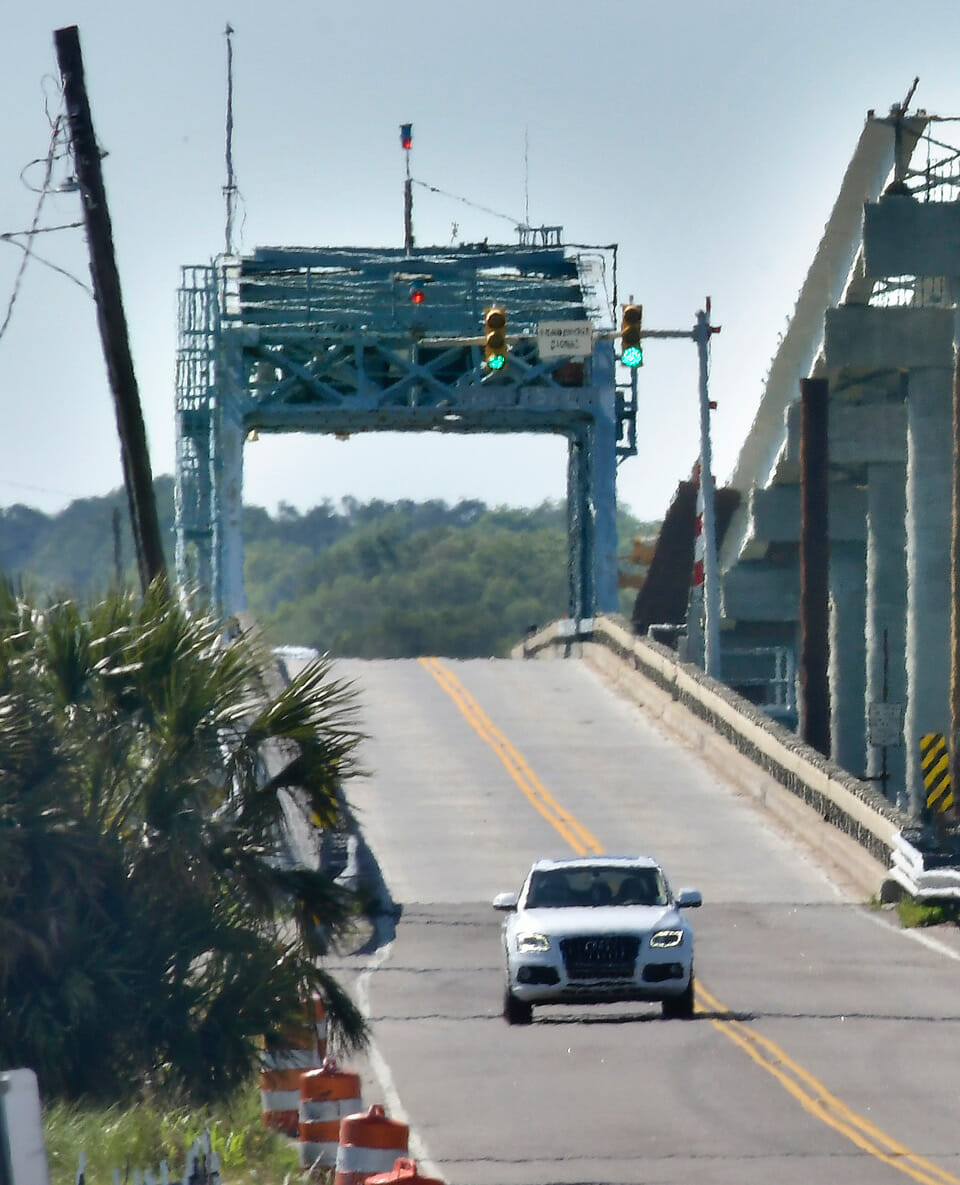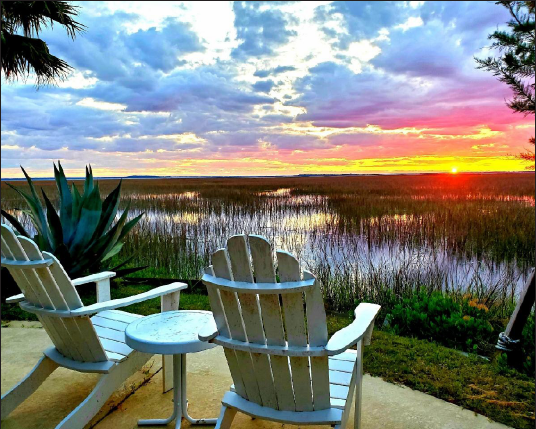Old Harbor River Bridge still has a role to play in Lowcountry
By Tess Malijenovsky
The old Harbor River Bridge, recently replaced by a new fixed-span bridge on Sea Island Parkway (U.S. 21), will soon become a part of the only managed deepwater artificial reef on the East Coast, the South Carolina Memorial Reef.
The riveted through truss swing bridge connecting St. Helena to Harbor, Hunting, and Fripp Islands was a locally cherished landmark built in 1939 at the start of World War II. There are only seven moveable bridges left in South Carolina, one of them being the Woods Memorial Bridge in downtown Beaufort.
While some locals are disappointed to see this piece of history removed, hoping it would remain as a fishing pier, others support the idea of the bridge living a second life under the sea enhancing saltwater marine fisheries and boosting sport fishing tourism for the state’s coastal economy.
Sen. George “Chip” Campsen is one of those supporters. He spearheaded the efforts to re-purpose the old swing bridge into an offshore artificial reef by teaming up with the board of the S.C. Governor’s Cup Billfishing Series to raise funds to acquire the old bridge from its owner.
“We approached Mr. Jim Tripplett, who’s the owner of the company that built the bridge, about not selling the bridge for scrap but to set it on a barge, take it offshore, sink it, and create an artificial reef,” said Sen. Campsen. “Mr. Tripplett was great to negotiate with but basically we had to get him to agree to this because he owned the bridge. In the future, I convinced DOT that they’re going to retain ownership of a bridge with a superstructure like this bascule bridge so that we can add to our artificial reef system.”
The senator is an avid billfish sports fisherman himself who participates in the S.C. Governor’s Cup Billfishing Series. His team set a new tournament record for most points scored catching billfish in 2019. He is also the chairman of the Senate Fish, Game and Forestry Committee, which has jurisdiction over South Carolina’s laws for environmental protection and conservation (Title 48); waters, water resources and drainage (Title 49); fish, game, and watercraft (Title 50); and parks, recreation, and tourism (Title 51).
“I’ve been offshore many times going over these reefs and you look at the sounder and it’s like a column of baitfish coming from the bottom that may be 100 feet or 150 feet tall that are congregating around the structure,” said Sen. Campsen. “That attracts the big pelagic predator, like billfish, wahoo, and mahi-mahi.”
The steel superstructure of the old bridge will be welded to a barge and then sunk 52 miles offshore between Charleston Harbor and St. Helena Sound at the South Carolina Memorial Reef. This is a designated 4-by-6-mile area roughly 300 to 450 ft deep where other structures, like shipping containers, culvert pipes, and tugboats, have already been sunk. It’s one of many artificial reefs managed by the Marine Resources Division of the S.C. Department of Natural Resources (SCDNR), but it’s the only deepwater artificial reef on the Atlantic Coast.
Underwater, the old bridge will quickly become covered with algae, barnacles, corals, sponges and other marine organisms that create the basis of a food chain for marine ecosystems.
The structure also creates a safe haven for shrimp, crab, sea urchins, mollusks and other fish to take shelter, spawn and seek protection from larger predators. This prey attracts larger bottom fish, including species of concern like grouper and snapper.
In turn, they attract pelagic fish that hunt along the surface. And these trophy fish — tuna, marlin, sailfish, mahi-mahi, wahoo — attract anglers and tourism dollars for the state.
According to the senator, the truss of the swing bridge is ideal for an artificial reef because it has a lot of relief.
“The superstructure on that bridge is probably 40 feet high,” he said. “You need a lot of elevation coming from the bottom that deep to create habitat for bottom fish, like grouper and snapper.”
According to SCDNR, artificial reefs are important to South Carolina’s marine life because the majority of the state’s continental shelf is a barren dessert — flat, featureless and made of sand. Only 10 percent is made of hard-bottom areas appropriate for natural reef formation, leading to considerable pressure by anglers and divers on those areas.
The artificial reef where the old swing bridge is going, also known as “Charleston’s Deep Reef,” is the state’s first Type II Marine Protected Area. This prohibits bottom fishing for snapper and grouper while allowing trolling at the surface, giving grouper and snapper an opportunity to recover from overfishing.
“We also have a need for nearshore reefs,” said Sen. Campsen, who hopes the concrete rubble leftover from the bridge will be repurposed into a nearshore artificial reef 5 to 10 miles offshore in St. Helena Sound. These plans are still in negotiation.
Over the next month, United Demolition will prepare the bridge for its trip offshore, salvaging what DOT can use and using underwater divers to burn the fender’s sheet pile in preparation for explosives. The truss will be cut in two, lashed onto a barge and moved in late May or early June, according to Brian Clark who is overseeing the bridge’s demolition.
Tess Malijenovsky is a journalist, columnist and photographer based in Beaufort. You can see more of her work at tessmalijenovsky.com or contact her at tessmalijenovsky@gmail.com.









